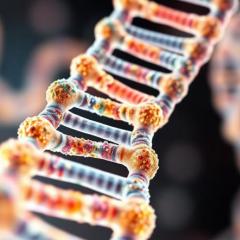
By Dr Fiona McMillan
Dr Roberta Mazzieri at the University of Queensland Diamantina Institute is working with cancer researchers in Italy to develop a non-toxic treatment for human breast cancer that delivers an anti-cancer molecule directly to a tumour.
“The interferon alpha protein has well-known anti-cancer properties, but previous efforts to use it as a cancer treatment have been limited because it has to be administered at high levels, which can be toxic,” she explains.
Dr Mazzieri and colleagues at Vita-Salute San Raffaele University and the San Raffaele Scientific Institute in Milan recently developed a way to deliver interferon alpha straight to tumour cells.
Their work focuses on a specific population of immune cells called TEMs, which enable normal formation of blood vessels.
“Tumours use TEMs to grow new blood vessels and to also help the tumour suppress the immune response,” explains Dr Mazzieri.
“Because TEMs are efficiently recruited to tumours, we exploited their tumour-homing activity to turn them into interferon alpha delivery vehicles.”
What enabled them to do this is the fact that TEMs make a protein called TIE2. This protein is essential during blood vessel formation, but is not really needed when the cell is at rest. Consequently, TIE2 is produced at low levels when TEMs are in circulation, but at much higher levels when they are being recruited to a tumour.
The researchers modified the cells so that whenever TIE2 was produced, interferon alpha would be produced as well. The approach has been likened to a Trojan horse: the molecule that can help destroy the tumour is hidden in a cell that the tumour wants for its own growth and progression.
“Its effect is so potent, you need only a few cells,” says Dr Mazzieri. “You have one cell producing interferon alpha and many cells responding.”
Clinically, the procedure is similar to a bone marrow stem-cell transplant. Stem cells from the patient’s bone marrow are removed, but rather than receiving a donor’s stem cells, the patient’s own stem cells are modified to include interferon alpha and then introduced back into the patient. These cells then go on to become TEMs.
The method has been tested in mouse models of breast cancer with extremely promising results. There was a strong anti-tumour effect along with significant reduction in cancer spreading, and without any observable toxicity. However, this was with mouse TIE2, mouse interferon alpha, and mouse breast cancer. They needed to show the method would work with human TIE2, human interferon alpha and human breast cancer.
Dr Mazzieri, together with Professor Luigi Naldini and colleagues in Milan, developed a new preclinical model for human breast cancer and then optimised the drug delivery method using human TEMs that produce human TIE2 and human interferon alpha. Using this approach they were able to safely and substantially inhibit the growth of human breast cancer tumours.
The study, published this month in Science Translational Medicine, represents a crucial stepping stone to human clinical trials.
“We have now illustrated the safety, feasibility, and therapeutic potential of the interferon alpha delivery platform for the treatment of human breast cancer,” says Dr Mazzieri, who is now based at UQDI where she is continuing this research.
She still wants to figure out exactly how interferon alpha is having an anti-tumour effect. She believes it may be triggering an immune response. Tumours find ways of making themselves invisible to the immune system in order to survive and grow. Her research shows that interferon alpha somehow takes that invisibility away.
“This tells us the immune system is able to fight a tumour if you reduce the immune-suppression promoted by the tumour. It tells us that the immune system is enough, you just need to give it a push.”
Dr Mazzieri, in collaboration with researchers at the Translational Research Institute in Brisbane, will now test the new approach in combination with other promising immunotherapies with the goal of developing new and more effective anti-tumour treatments. In particular she would like to explore the efficacy of this new approach in inhibiting breast cancer metastasis (spreading).
She also points out that the treatment would not be limited to breast cancer.
“This is a general approach, which means you can use it on different tumour types.”
Contact: Kate Templeman, Communications and Marketing Manager, UQ Diamantina Institute, (07) 3443 7027, 0409 916 801 or k.templeman@uq.edu.au
Dr Fiona McMillan, Science Writer, UQ Diamantina Institute, (07) 3443 7025 or
f.mcmillan@uq.edu.au.



